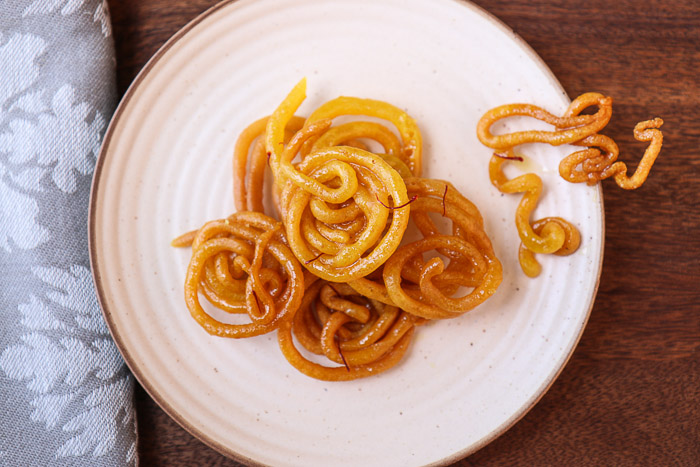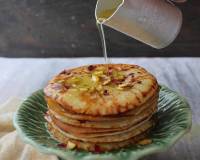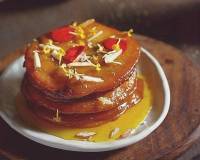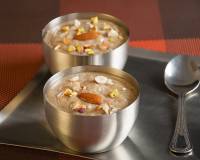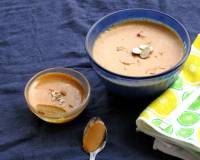How to Make Homemade Jalebi Recipe
The Homemade Jalebi Recipe is a delicious Indian Sweet dish that you can make as a dessert for your Holi or Diwali party and serve it along with hot Rabdi.
The Homemade Jalebi Recipe is a delicious mithai dish that you can make right in your own kitchen. The Jalebi is a traditional sweet dish that is made on every festival, special occasions and monsoons. And so much so even homes make this dish to celebrate the occasion. This homemade Jalebi recipe is actually very easy to prepare and tastes absolutely delicious. Festivals like Holi and Diwali are incomplete without the preparation of this class Indian dessert - Jalebi.
Serve the Homemade Jalebi Recipe as a Indian Party Dessert for the festival of Holi or Diwali and serve it along with hot Rabdi.
If you are looking for more Indian Sweets and Dessert Recipes you can try some of our favorites.
10 M
530 M
540 M
4 Servings
Ingredients
- 1 cup All Purpose Flour (Maida)
- 2 tablespoon Corn flour
- 3/4 cup Curd (Dahi / Yogurt) , Sour
- 1/2 teaspoon Baking powder
- 2 tablespoon Ghee
- 1 teaspoon Turmeric powder (Haldi) , for colour
- 2 tablespoons Oil , plus more oil for deep frying Ingredients for the sugar syrup
- 1 cup Sugar
- 1 cup Water
- 1 Saffron strands
How to make How to Make Homemade Jalebi Recipe
To begin making the Jalebi Recipe, we will first begin the preparation by mixing the maida, corn flour, baking soda, ghee and turmeric powder in a medium bowl. Combine all the dry ingredients well, until well combined.
Add yogurt to the dry ingredients and blend them all together to make a thick batter by adding very little water. The consistency of the batter should be thick and not watery, similar to the butter cream batter. You should be able to make a shape when piped in a piping bag.
When done, cover the jalebi batter and place it in a warm place for 24 hours or overnight, till it is fermented (the batter will rise on fermentation). Once the batter is fermented stir the batter in a cut and fold motion to combine it once again.
Dont over stir you want the air pockets in the batter to remain. This will help in the jalebi being crisp and also in turn help it absorb the sugar syrup.
To make the sugar syrup, boil the sugar with water and saffron powder in a small bowl on medium heat until the sugar dissolves. When the sugar becomes thick and stringy of one string consistency.Turn off the heat and keep aside.
Now to make the jalebis, preheat the oil for deep frying. Once the oil is hot enough, you will know this, when you add a drop of batter in and it will come rising to the top almost immediately.
Once you have filled the piping bag, pipe spirals of the batter onto the medium hot oil, until you get at least 3 concentric circles. Fry the jalebi on medium heat until golden brown in colour and crisp. Once the jalebi is crisp and browned, drain the excess oil out and immediately dip the jalebi into the hot sugar syrup.
Piping the jalebis into the medium hot oil takes a little experience, the more you pipe the more practice you will get and the better you get at it.
The Jalebis should rest in the sugar syrup for at least a minute, after which they can be drained out of the excess syrup and then served.
Enjoy these crisp, sweet Homemade Jalebis as a wonderful dessert or a sweet option for your guests.
Serve the Homemade Jalebi Recipe as a Indian Party Dessert for the festival of Holi or Diwali.
Note:
Ensure the batter is thick and firm, or else they won’t retain the shape of the jalebis. The oil for frying should be medium hot. If it is too hot, the jalebis will end up burnt.
Also make sure you keep the heat on low when you pipe the jalebis into the oil, this will ensure you can see the circles you are piping and also the jalebis will rise up slowly.
